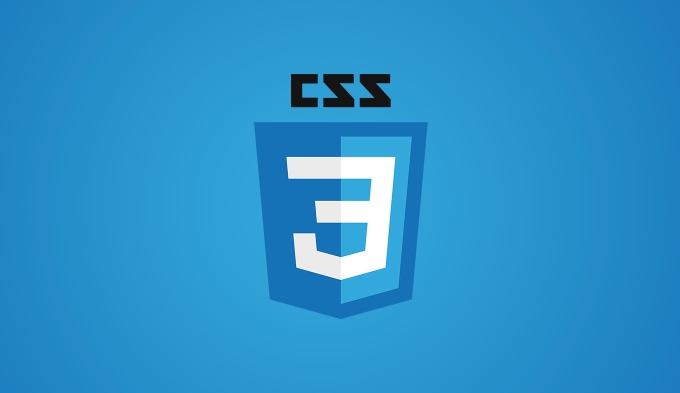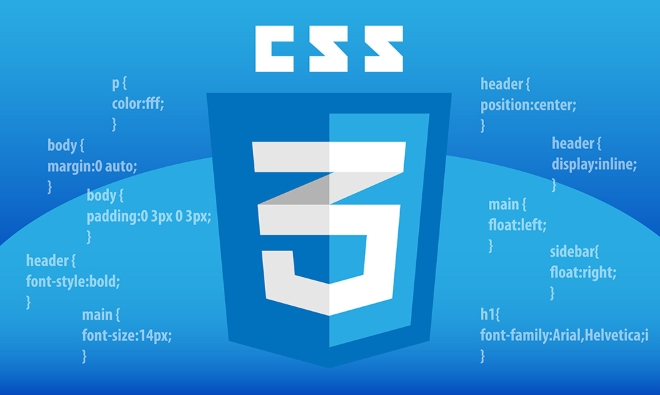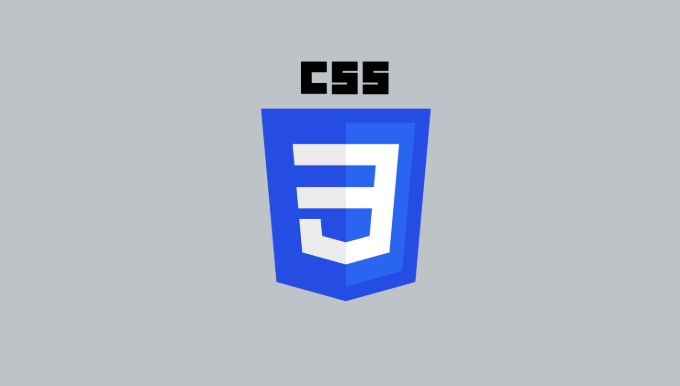backdrop-filter can enhance the hierarchy of web pages through blur and other effects, and is suitable for pop-up windows, cards and other components. 1. Use blur to achieve the frosted glass effect, such as .modal { backdrop-filter: blur(10px); background-color: rgba(255, 255, 255, 0.6); }, and it is recommended to add the -webkit- prefix to improve compatibility; 2. Combining multiple filter functions such as brightness, contrast, etc. can create a richer visual style, but pay attention to the order affecting the effect; 3. Pay attention to the impact of performance consumption, browser compatibility and hierarchy structure on display effect, and adopt a downgrade solution to ensure the consistency of the page experience.

Sometimes when you want to make web elements look more layered or have a bit of frosted glass texture, backdrop-filter comes in handy. It does not only act on its own content like ordinary filters, but can "treat" the background and make effects similar to frosted glass, blur, contrast adjustments, etc. It is especially suitable for pop-up windows, cards, and navigation bars, which require visual separation from the background.

1. Simple implementation of the blur effect
This is one of the most common uses of backdrop-filter . For example, if you want to make a translucent pop-up window but don’t want the background to be completely obscured, you can add a blur filter:

.modal {
backdrop-filter: blur(10px);
background-color: rgba(255, 255, 255, 0.6);
}In this way, the user sees the picture after the background is blurred, and at the same time, they can see the content in the pop-up window clearly. This effect performs well in mobile or modern browsers, but may not be supported in some older browsers, so you need to pay attention to compatibility.
A common practice is to add -webkit- prefix to adapt to Safari and iOS browsers:

.modal {
-webkit-backdrop-filter: blur(10px);
backdrop-filter: blur(10px);
background-color: rgba(255, 255, 255, 0.6);
}2. Use multiple filters in combination to create a richer visual style
backdrop-filter is not only blur, but also can superimpose multiple filter functions, such as brightness, contrast, grayscale, etc. You can freely combine according to your design requirements:
.card {
backdrop-filter: blur(5px) brightness(90%) contrast(120%);
}The above code means: first blur 5px, then slightly dim to enhance contrast. This will make the card look more textured and easier to "jump out" from the background.
Some commonly used filter functions include:
-
blur(px): degree of blur -
brightness(%): brightness -
contrast(%): contrast -
grayscale(%): grayscale -
saturate(%): saturate
Pay attention to the order when combining, different orders will affect the final effect. For example, blurring first and then adjusting the brightness will be different from the visual feeling of brightening first and then blurring it out.
3. Pay attention to performance and compatibility issues
Although backdrop-filter is cool, it is not omnipotent. Please pay attention to the following points when using it:
- High performance consumption : especially when a large range of blur effects is used, page scrolling may be stuttered, especially on low-end devices.
- Browser compatibility is limited : Currently, mainstream browsers support it, but old antiques like IE are not good. If the project requires compatibility with old browsers, it is best to prepare alternate styles.
- The hierarchy affects the display effect :
backdrop-filteris rendered based on the area behind the element, so the parent container cannot haveoverflow: hiddenor some cropping settings, otherwise the filter effect will not be visible.
Solution:
- The control fuzzy value should not be too large, generally 5~10px is enough
- Use only on key UIs to avoid large-scale abuse
- Add
-webkit-prefix to improve compatibility - Provide downgrade solutions for unsupported browsers, such as pure translucent backgrounds
Basically that's it. Using backdrop-filter rationally can make your web page more visually attractive and not complicated to operate. The key is not to forget to consider performance and compatibility.
The above is the detailed content of Using CSS backdrop-filter for unique effects. For more information, please follow other related articles on the PHP Chinese website!

Hot AI Tools

Undress AI Tool
Undress images for free

Undresser.AI Undress
AI-powered app for creating realistic nude photos

AI Clothes Remover
Online AI tool for removing clothes from photos.

Clothoff.io
AI clothes remover

Video Face Swap
Swap faces in any video effortlessly with our completely free AI face swap tool!

Hot Article

Hot Tools

Notepad++7.3.1
Easy-to-use and free code editor

SublimeText3 Chinese version
Chinese version, very easy to use

Zend Studio 13.0.1
Powerful PHP integrated development environment

Dreamweaver CS6
Visual web development tools

SublimeText3 Mac version
God-level code editing software (SublimeText3)

Hot Topics
 What is 'render-blocking CSS'?
Jun 24, 2025 am 12:42 AM
What is 'render-blocking CSS'?
Jun 24, 2025 am 12:42 AM
CSS blocks page rendering because browsers view inline and external CSS as key resources by default, especially with imported stylesheets, header large amounts of inline CSS, and unoptimized media query styles. 1. Extract critical CSS and embed it into HTML; 2. Delay loading non-critical CSS through JavaScript; 3. Use media attributes to optimize loading such as print styles; 4. Compress and merge CSS to reduce requests. It is recommended to use tools to extract key CSS, combine rel="preload" asynchronous loading, and use media delayed loading reasonably to avoid excessive splitting and complex script control.
 How to use Lotties in Figma
Jun 14, 2025 am 10:17 AM
How to use Lotties in Figma
Jun 14, 2025 am 10:17 AM
In the following tutorial, I will show you how to create Lottie animations in Figma. We'll use two colorful designs to exmplify how you can animate in Figma, and then I'll show you how to go from Figma to Lottie animations. All you need is a free Fig
 Breaking Boundaries: Building a Tangram Puzzle With (S)CSS
Jun 13, 2025 am 11:33 AM
Breaking Boundaries: Building a Tangram Puzzle With (S)CSS
Jun 13, 2025 am 11:33 AM
We put it to the test and it turns out Sass can replace JavaScript, at least when it comes to low-level logic and puzzle behavior. With nothing but maps, mixins, functions, and a whole lot of math, we managed to bring our Tangram puzzle to life, no J
 External vs. Internal CSS: What's the Best Approach?
Jun 20, 2025 am 12:45 AM
External vs. Internal CSS: What's the Best Approach?
Jun 20, 2025 am 12:45 AM
ThebestapproachforCSSdependsontheproject'sspecificneeds.Forlargerprojects,externalCSSisbetterduetomaintainabilityandreusability;forsmallerprojectsorsingle-pageapplications,internalCSSmightbemoresuitable.It'scrucialtobalanceprojectsize,performanceneed
 Does my CSS must be on lower case?
Jun 19, 2025 am 12:29 AM
Does my CSS must be on lower case?
Jun 19, 2025 am 12:29 AM
No,CSSdoesnothavetobeinlowercase.However,usinglowercaseisrecommendedfor:1)Consistencyandreadability,2)Avoidingerrorsinrelatedtechnologies,3)Potentialperformancebenefits,and4)Improvedcollaborationwithinteams.
 CSS Case Sensitivity: Understanding What Matters
Jun 20, 2025 am 12:09 AM
CSS Case Sensitivity: Understanding What Matters
Jun 20, 2025 am 12:09 AM
CSSismostlycase-insensitive,butURLsandfontfamilynamesarecase-sensitive.1)Propertiesandvalueslikecolor:red;arenotcase-sensitive.2)URLsmustmatchtheserver'scase,e.g.,/images/Logo.png.3)Fontfamilynameslike'OpenSans'mustbeexact.
 CSS Counters: A Step-by-Step Tutorial with Examples
Jun 12, 2025 am 10:31 AM
CSS Counters: A Step-by-Step Tutorial with Examples
Jun 12, 2025 am 10:31 AM
CSSCounters is a tool for creating automatic numbers. 1. Basic usage: define and operate counters through counter-reset and counter-increment, such as "SectionX." before h2. 2. Advanced usage: Use nested counters to create complex numbers, such as chapter and section numbers. 3. Notes: Ensure the counter is reset correctly, optimize performance, and simplify counter logic. 4. Best practice: clear naming, define counters in CSS, and use counter-increment and counter-reset reasonably.
 What is Autoprefixer and how does it work?
Jul 02, 2025 am 01:15 AM
What is Autoprefixer and how does it work?
Jul 02, 2025 am 01:15 AM
Autoprefixer is a tool that automatically adds vendor prefixes to CSS attributes based on the target browser scope. 1. It solves the problem of manually maintaining prefixes with errors; 2. Work through the PostCSS plug-in form, parse CSS, analyze attributes that need to be prefixed, and generate code according to configuration; 3. The usage steps include installing plug-ins, setting browserslist, and enabling them in the build process; 4. Notes include not manually adding prefixes, keeping configuration updates, prefixes not all attributes, and it is recommended to use them with the preprocessor.






